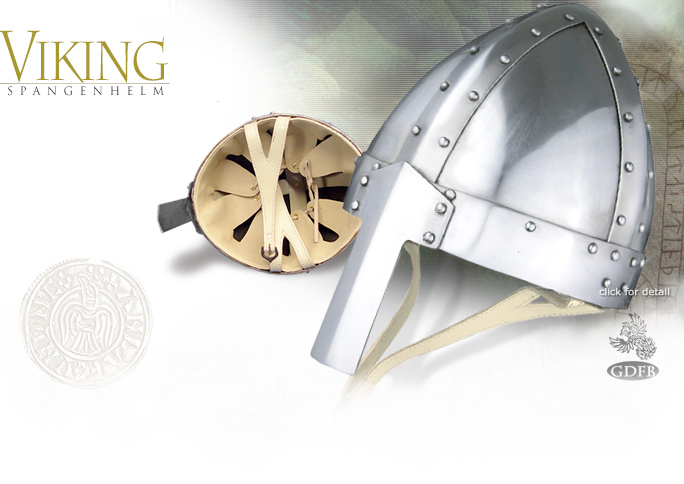VIKING SPANGENHELM V.3 AB0415, AB0416 by GDFB AB0415, AB0416 by GDFB
Mainstays of the Viking era, Spangenhelms are characterized by their construction, whereby steel strips (spangen) are used to join the steel plates of the cap. For strength and safety, the cap this reconstruction by GDFB is virtually one-piece, comprised of two halves, welded together along a back to front centre line. Steel rivets are used to attach the overlying banding and 3mm. straight nose-guard (nasal). Crafted in 16 gauge steel with full leather liner, chin straps, and authentic brass buckle, the GDFB Spangenhelm is battle ready and perfect for the Viking reenactor. Made available in two sizes; Medium AB0415 24-1/4 inch Circumference, and Large AB0416 25-1/2 inch Circumference. The fine workmanship on this Viking Spangenhelm and overlapping construction insures robustness and therefore the best possible protection during battle reenactment.

|
|
|
The nasal helmet would usually have been worn over a mail coif, which protected the lower parts of the head, throat and neck. The coif could be a separate item of armour or be formed as an extension of the mailcoat itself. The existence of rivets and holes around the lower edge of these helmets indicate that they were lined in some manner, though no linings as such have survived. Practical considerations suggest that linings must have been adjustable to ensure a secure fit.
The nasals of these helmets were often so large that the wearer was unrecognizable to an observer. The celebrated incident at the Battle of Hastings, illustrated on the Bayeux tapestry, where William the Conqueror had to lift his helmet to show his troops that he was still alive is an indication of the anonymity nasal helmets produced.
|
|